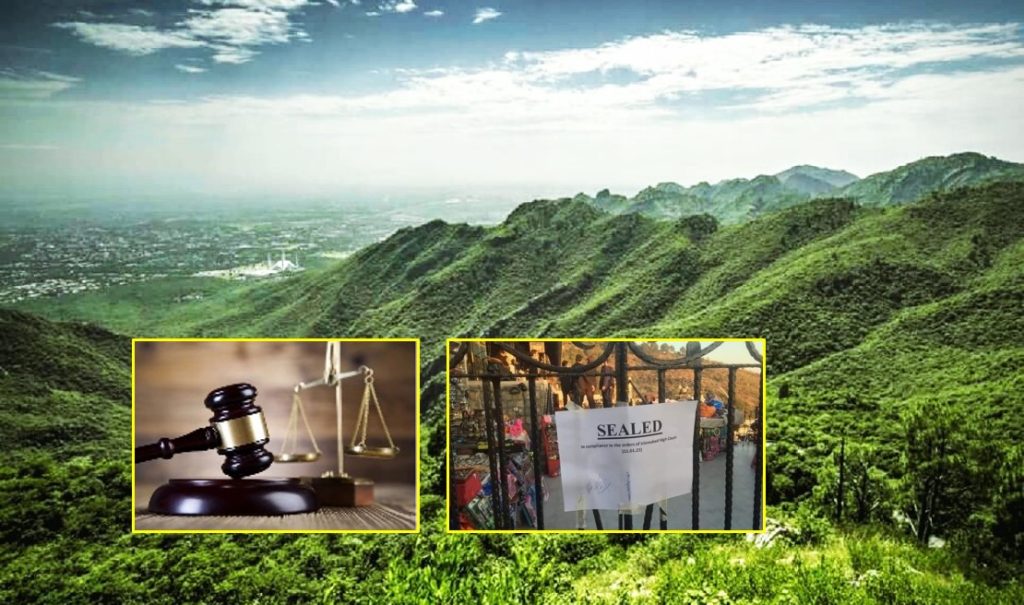Frequent wildfires on Margalla Hills National Park have long remained a matter of concern. The Margalla Hills annually endure a perilous fire season from April to June, with incidents often abating only with the arrival of the monsoon rains in July. However, this year, the frequency and intensity of the fires have been unprecedented. Only on the 28th of May, there were 15 fire incidents recorded inside the 12,605 hectares Margalla Hills National Park. Suspecting human involvement, the interior minister ordered an inquiry, but we have witnessed that any such inquiry always ends in vain. What the higher authorities aren’t considering is the use of technology, as harnessing the potential of Artificial Intelligence (AI) and Machine Learning (ML) offers a reliable way for detection and protection of wildfires at Margalla Hills.
Artificial Intelligence Against Margalla Hills’ Wildfires
AI is a surprising and unsuspecting weapon against wildfires. Scientists at the World Economic Forum believe AI offers promising applications to “pre-, intra-, and post-wildfire events” and when “combined with end-to-end fire management systems, are powerful tools for combating wildfires.” Although, the recent efforts by the Capital Development Authority (CDA) and the Islamabad Wildlife Management Board (IWMB) have been commendable, yet insufficient. The CDA`s recent hiring of over 400 local firefighters and establishment of 38 pickets demonstrates a proactive approach. However, the lack of coordination and persistent turf battles between the CDA and IWMB hinder efficient fire management. A unified command structure, as suggested by experts, is essential for an effective response.

On the other hand, there are many aspects of wildfire prevention that need to be addressed with better tools and innovative thinking, because wildfires still pose an uncontrolled threat to forests. These aspects include risk management, prevention, forecasting and detection, and rapid response. Creating a sharable algorithm to be used collaboratively by professionals in the field can help mitigate wildfires early, in conjunction with the big data we now have access to such as maps, satellite imagery, weather, and wind patterns. While tech tools such as cameras, Internet of Things (IoTs) sensors, and remote sensing models can build a scalable and stable system by integrating various independent platforms that address different parts of the ecosystem.
Encroachments on Margalla Hills:
Margalla Hills National Park including the Margalla Hills range, is the third-largest national park in the world and serves as the oxygen supplier to inhabitants of the capital of Pakistan. Although, the Islamabad Master Plan clearly states that there shall be no construction in the capital’ Zone 3, where the Margalla range passes, but illegal construction continues in Islamabad’s Margalla Hills National Park and covertly serves as a prime reason for wildfires in the Park. A CDA official of the environment wing reportedly suspected that “some people deliberately ignited the fires.” Besides, according to an investigative reporter on a TV channel, the wildfires are attempts by the timber mafia to cover up the illegal deforestation in Margalla Hills.
Some Artificial Intelligence Measures:
If frequent wildfires are continued, there would be huge destruction damage to the hills, flora and fauna. However, as stated the authorities haven’t considered yet to use the technology especially AI and MI models to detect and prevent wildfires. Like;
- AI linked with imaging satellites can analyze factors such as the emergence of smoke, incidence of fire, and disturbance of vegetation, and correlate them with various physical parameters of the forest such as vegetation type, climate, landscape, fire susceptibility mapping, and soil deposits to predict the occurrence and pattern of wildfires.
- Unmanned aerial vehicles (UAVs) can be flown over fires to provide live images and help firefighters plan their response
- Sensors with inbuilt AI can collect acoustic information or operate as smoke detectors in forests and alert authorities within the first hour of a wildfire.
- Advancements in data-collection methods support firefighting and wildfire risk management.
- The learning of AI algorithms during the prediction process increases the accuracy of predictions.
- AI technologies also allow for easy management of many patrol vehicles with video cameras and fire extinguishers by a single user, ensuring early detection and efficient management of forest fires.
By
Editorial, Infocus


